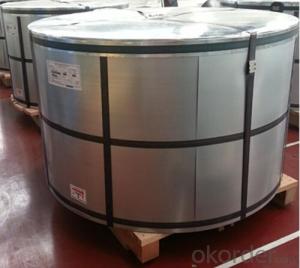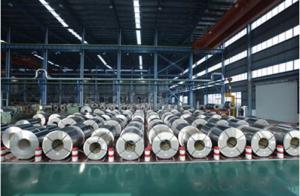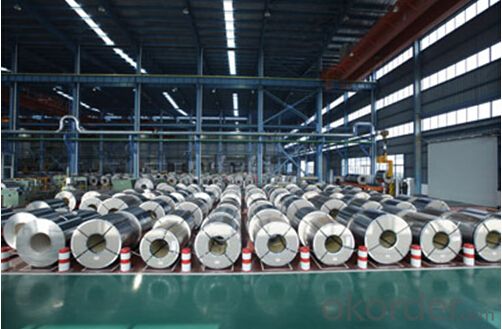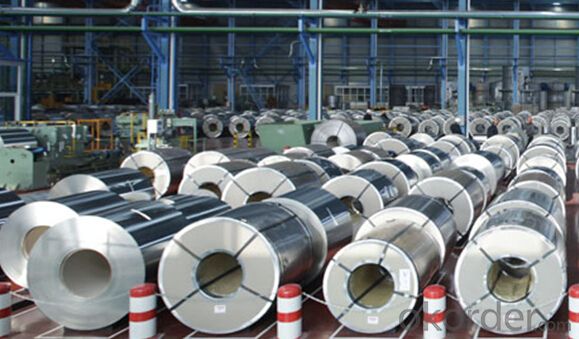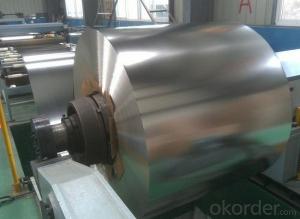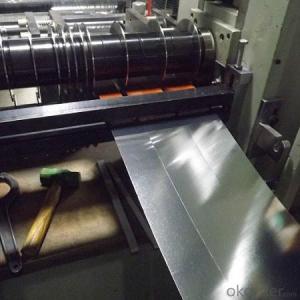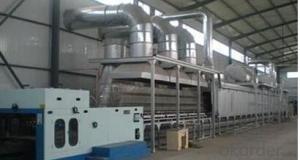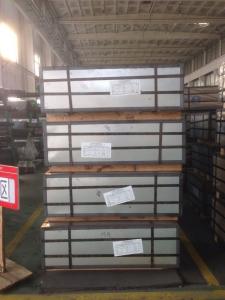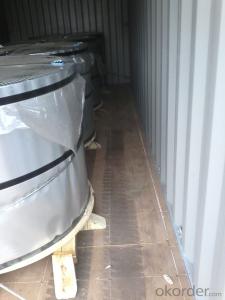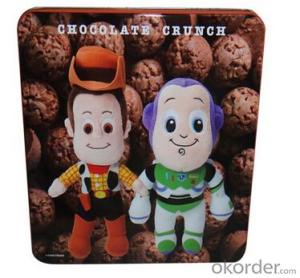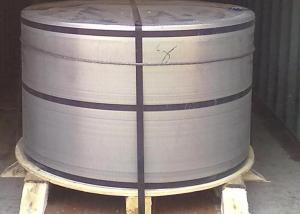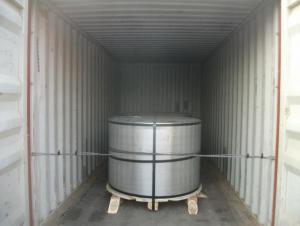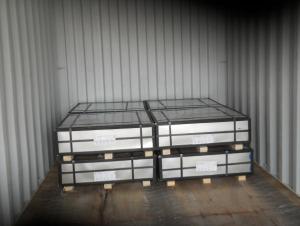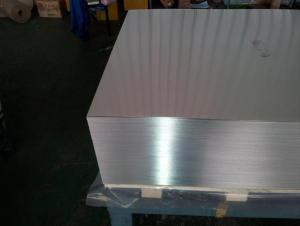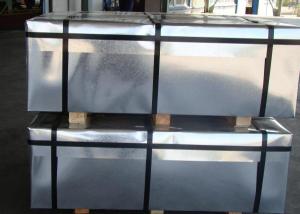Prime Quality Tinplate Products for Food Cans Use
- Loading Port:
- Shanghai
- Payment Terms:
- TT OR LC
- Min Order Qty:
- 25 m.t.
- Supply Capability:
- 1000 m.t./month
OKorder Service Pledge
OKorder Financial Service
You Might Also Like
1.Structure Description
Electrolytic Tinplate Sheets is one of the metal packing materials, which is widely used for making painting cans ,chemical package cans , electrical cable ,battery and metal printing etc.
2. Main Features
Steady and high quality
Fast shipment
Good experience for export work
For the surface, Plate uniform in thickness,uniform and smooth tin coating, without flaws,rusts,scratch,wave,nick of tin coating etc.
Price competitive
3.Images
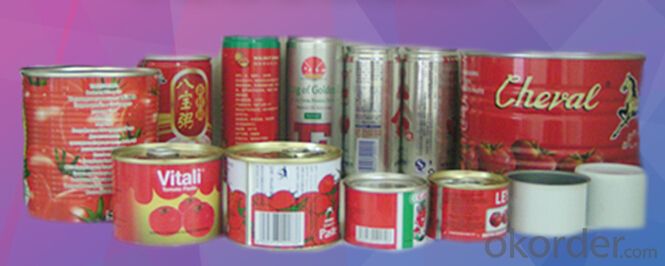
4. Specification
Standard : GB2520-2000 ,JIS G3303
Steel type : SPCC,MR
Coating : 2.8/2.8
Surface: Bright, Stone ,
Thickness:0.18
Width :600MM~1000MM
Temper : T1~T5,DR8
Package: tinplate wrapped completely with an inner cover of plastic or waterproof papers with vorners protected with metal angels.
5.FAQ
A. What is the package of tinplate? (Referred as below)
For sheets, thin plastic film + rust-proof paper + metallic cover + metallic angles+ steel band strips + fumigated wooden pallet.
For coil, thin plastic film + rust proof paper + metallic cover + steel band strips + fumigated wooden pallet
B. The surface of tinplate could you supply?
Stone finish, Bright finish, Matte finish, Silver finish
C. What quantity is the minimum order of tinplate?
Usually, the minimum quantity is 25MT. For special case, consult with us.
D. Can it make to be BA or CA for annealing?
Yes, both can do with.
E.Do you have other tin coating?
Yes, we can do with E2.8/2.8, E5.6/5.6,D2.8/5.6 etc.
- Q: What are the main suppliers of tinplate?
- The main suppliers of tinplate are major steel manufacturers, such as ArcelorMittal, Nippon Steel Corporation, Tata Steel, and JFE Steel Corporation.
- Q: How does tinplate contribute to the durability of construction materials?
- Tinplate contributes to the durability of construction materials by providing a protective coating that helps prevent corrosion and rusting. This coating acts as a barrier against moisture and other environmental factors, extending the lifespan of the construction materials. Additionally, tinplate enhances the strength and structural integrity of the materials, making them more resistant to wear and tear.
- Q: What is tin plate?
- Tinplate is made of iron tin alloy and tin is plated. Mainly used in food packaging, tin cans production, because the tin steel strength and formability and corrosion resistance of tin soldering, and beautiful appearance with a material, corrosion resistant, non-toxic, high strength and good ductility properties.
- Q: What are the different tinplate grades available in the market?
- There are several tinplate grades available in the market, including standard tinplate, high tensile tinplate, and extra deep drawing tinplate.
- Q: What are the latest innovations in tinplate technology?
- Some of the latest innovations in tinplate technology include advancements in coatings, such as new environmentally friendly and corrosion-resistant coatings, as well as improved printing techniques for enhanced graphic quality on tinplate packaging. Additionally, there have been developments in lightweighting techniques to reduce the overall weight of tinplate while maintaining its strength and durability.
- Q: Can tinplate be shielded?
- But the tin incision as mentioned above is easy to rust, now the mobile phone but also through the salt spray test, so the comparison with foreign paktong insurance. I was listening to the supplier of phosphor bronze, copper - and Ocean high strength, good solderability, a little expensive Yu Yang white copper, but the large amount of words is not obvious! The shield is also made of stainless steel, but because of poor weldability, it is only used on two pieces of COVER (COVER, FRAME)! I don't know. Is that right?
- Q: How does tinplate contribute to the overall ease of opening and closing packaging?
- Tinplate contributes to the overall ease of opening and closing packaging by providing a strong and durable material that can be easily shaped into various packaging forms. It offers excellent corrosion resistance, ensuring that the packaging remains intact and functional. Additionally, tinplate can be easily formed into easy-to-use closures, such as twist-off caps or pull tabs, enabling convenient opening and closing of the packaging without requiring any additional tools.
- Q: How does tinplate contribute to the overall aesthetics of packaging?
- Tinplate contributes to the overall aesthetics of packaging by providing a sleek and shiny appearance. Its smooth surface allows for vibrant and high-quality printing, enhancing the visual appeal of the packaging. Additionally, tinplate's durability and ability to maintain its shape and color over time add to the overall attractiveness of the packaging, making it eye-catching and desirable to consumers.
- Q: What are the factors that affect the cost of tinplate?
- The factors that affect the cost of tinplate include the price of raw materials such as tin and steel, market demand and supply dynamics, production and manufacturing costs, transportation and logistics expenses, currency exchange rates, and any government regulations or tariffs that may impact trade.
- Q: Can tinplate be used for coinage?
- No, tinplate cannot be used for coinage as it is not a durable or suitable material for minting coins.
Send your message to us
Prime Quality Tinplate Products for Food Cans Use
- Loading Port:
- Shanghai
- Payment Terms:
- TT OR LC
- Min Order Qty:
- 25 m.t.
- Supply Capability:
- 1000 m.t./month
OKorder Service Pledge
OKorder Financial Service
Similar products
Hot products
Hot Searches
Related keywords
